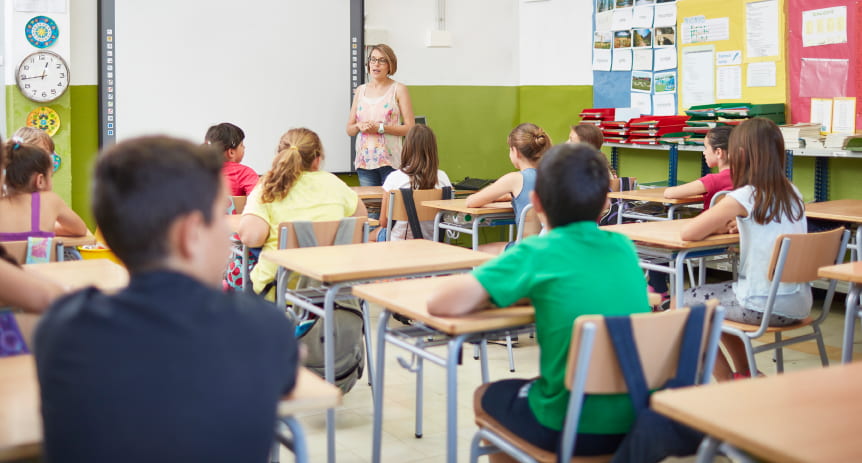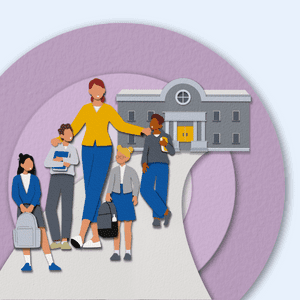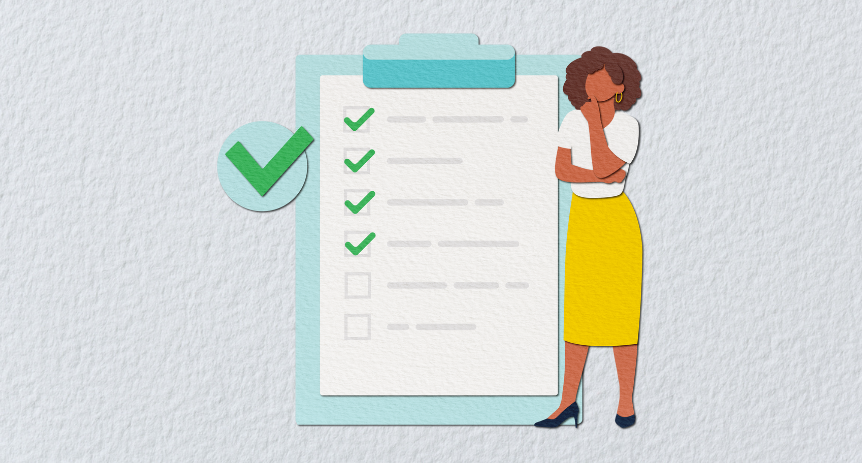June is National Safety Month and a time to acknowledge that creating and maintaining a safe learning environment is as much a part of substitute teachers’ priorities as it is schools’. Whether it’s managing classroom behavior or ensuring physical safety, having the right classroom safety strategies in place is crucial.
In this blog, we’ll delve into practical and effective ways substitute teachers can foster a secure and positive atmosphere, ensuring both their well-being and that of their students. From understanding the school’s safety plans to proactive classroom management, we’ll cover essential tips that make a big difference.
10 tips for substitute teachers to ensure classroom safety
1. Familiarize yourself with the school’s safety plans
Before the school day begins, briefly familiarize yourself with the school’s safety procedures and evacuation plans. Understanding the school’s plans will help you be prepared to respond in situations like fire drills or lockdowns.
2. Establish clear classroom rules
Establishing simple, clear rules at the beginning of the day is essential. When introducing yourself to the class, outline the rules that students are expected to follow. These might include raising hands to speak, respecting each other, and staying seated unless given permission otherwise. Presenting yourself as approachable but firm, you can make it clear that you expect their cooperation and respect in maintaining a safe learning environment.
3. Be prepared for emergencies
Always have access to the contact list, first aid kit, and any other resources that might be needed in an emergency. Knowing where these items are located and how to use them effectively can make a significant difference in situations where you may need to act quickly.
4. Communicate with the school staff
Those who are in classrooms everyday are important sources of information. Build a rapport with the regular teaching staff, administrators, and other support personnel. They can provide valuable insights into the students’ behaviors and any special needs or concerns that may arise.
5. Maintain positive school discipline
Use positive reinforcement and set reasonable expectations. Consistency is key to managing student behavior and maintaining discipline in the classroom. If there’s a disruption, handle it immediately to prevent escalation, but aim to do so in a way that maintains students’ dignity and reinforces a respectful environment.
6. Build a positive relationship with students
Engaging with students and showing genuine interest in their learning can help in creating a respectful and secure classroom atmosphere. A little bit of kindness and understanding goes a long way in building trust.
7. Stay informed about school policies
Make sure you are up-to-date with the school’s policies on bullying, cyberbullying, and other disciplinary measures. This knowledge will help you handle any issues that come up in these contexts more effectively and give you more confidence in knowing what approaches you may use in different situations. Plus, reinforcing school policies can provide a framework that supports your own rules.
8. Address student needs and concerns
Be observant and attentive. If a student seems to be behaving erratically, appears unwell, or is distressed, address the issue to ensure their safety and well-being. Contact the front office or refer them to the school’s guidance counselor if necessary.
9. Utilize support staff and resources
Don’t hesitate to lean on the support staff such as teacher aides, counselors, and librarians. They can offer assistance and resources that make managing the classroom easier and safer.
10. Document incidents and report as required
Keep a detailed record of any incidents that occur and report them according to the school’s guidelines. Documentation is essential for maintaining a safe learning environment and handling future occurrences effectively.
What do I do if there’s a fight in the classroom?
Handling conflict in the classroom, like fist fights, requires quick thinking and immediate intervention to ensure safety for all students. Here’s what you can do:
- Remain calm and authoritative. Your demeanor can influence the students’ reactions and help de-escalate the situation.
- Quickly enlist the help of a hallway monitor, school security, or other nearby staff to help you manage the situation.
- Do not physically engage to separate the students unless absolutely necessary and safe for all, including yourself. If you are able to safely separate the students involved, ensure that they are supervised individually.
- Notify the school administration immediately, following school policies.
- After the incident, write a detailed report including the time, students involved, and how the situation was handled. This document is essential for the regular teacher and the school’s follow-up actions.
Substitute teaching involves stepping into a full-time teacher’s shoes, maintaining the learning environment, and ensuring the classroom runs smoothly. Engaging with students, keeping lessons on track, and managing classroom behavior effectively are key components that help create a secure and positive learning environment. Whether you are a seasoned educator or new to the field, you have the opportunity to embrace the challenge and make every teaching opportunity a successful one by prioritizing safety and respect above all.






